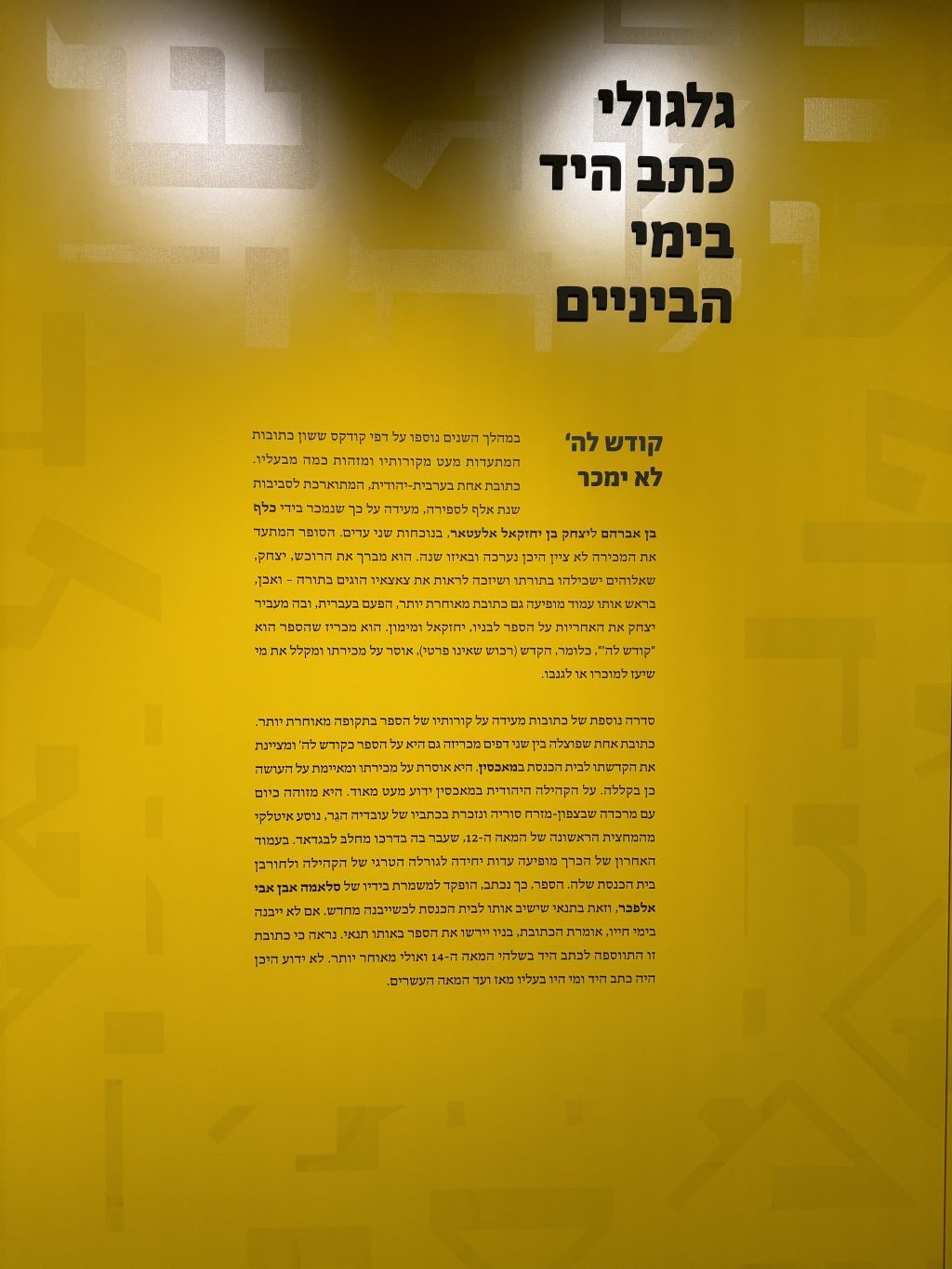Text Panel
Sacred unto God – not for Sale
Over the years, Codex Sassoon accrued inscriptions documenting some of its history and
identifying some of its owners. One Judeo-Arabic inscription, dated to approximately the
year 1000 CE, attests to the sale of the codex by Khalaf ben Avraham to Yitzhak ben
Yehezkel al-Attar in the presence of two witnesses. The scribe who documents the sale does
not mention the location or date of the transaction. He blesses the buyer, Yitzhak, that God
should enlighten him with the Torah and that his descendants should study it. And indeed,
at the top of that very page is another inscription – this one in Hebrew – in which Yitzhak
entrusts the codex to his sons, Yehezkel and Maimon. He declares that the book is “sacred
unto God” – a sacred trust, not private property – prohibits its sale, and curses whoever
dares sell or steal the book.
Another series of inscriptions recount the history of the codex during a later period. One
inscription, divided across two pages, likewise declares the book sacred to God and
designates it as property of the synagogue in Makisin. The inscription forbids sale of the
codex and threatens anyone who does so with a curse. We know very little about the Jewish
community of Makisin. It is identified with the modern-day Markada, in northeast Syria, and
it is mentioned in the writings of Obadiah the Proselyte, an Italian traveler from the first half
of the 12 th century who passed through Makisin on his journey from Aleppo to Baghdad. The
last page of the codex bears sole witness to the tragic fate of the community and the
destruction of its synagogue. The codex, the inscription states, was entrusted to Salama ibn
Abi al-Fakhr on condition that he returns it to the synagogue after it is rebuilt. If it is not
rebuilt in his lifetime, his sons would inherit the codex under the same terms. This
inscription is dated to the late-14 th century at the earliest. Its ownership and whereabouts
from then until the early 20 th century remain unknown.

